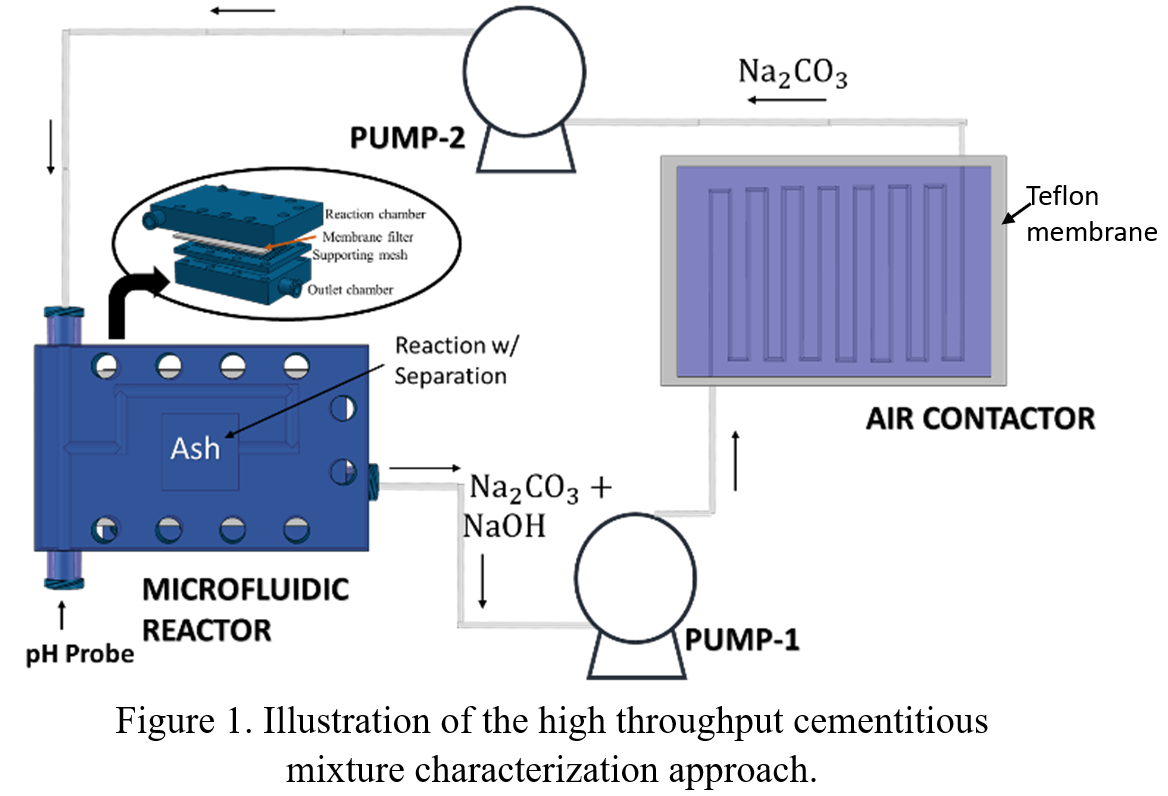2023 AIChE Annual Meeting
(699c) Continuous-Flow Microfluidic Device to Screen CO2 Capture Efficiency of Carbonation of Industrial Mineral Waste
Ordinary Portland cement is produced using limestone, clay and sand. This process is energy intensive as it involves heating the raw material at high temperature and releases enormous amount of gas. Alternatively, industrial mineral waste (IMW) can be carbonated by using carbonate solution (e.g., Na2CO3). The carbonated IMW can be alkali activated to form Geopolymer which can fully replace Portland cement. In this carbonation step, the resultant liquid stream is mixture of NaOH (produced during carbonation) and Na2CO3. This NaOH is used to capture CO2 from air to form Na2CO3 which is reused for carbonation. This process uses aqueous carbonation cycle to capture CO2 from the air at low cost while simultaneously upcycling industrial mineral wastes as cementitious materials by enhancing their pozzolanic reactivity. The resulting carbonated IMWs host the sequestered CO2 in the form of solid carbonate (e.g., CaCO3). The major challenges in this process are feedstock variability and the long development cycles associated with the traditional trial-and-error concrete mixture design. In this work, we developed a continuous-flow membrane embedded microfluidic device to screen CO2 capture efficiency. The process parameters and performance are predicted with this microfluidic reactor system that allowed the entire process cycle to be easily performed with small quantities of materials. Figure 1. shows a design of a membrane-embedded microfluidic reactor, which allow a continuous flow of liquid through a reaction chamber (4x4x2 mm) containing a fixed mass of alkaline waste (ash). The alkaline solution from the outlet of the microfluidic reactor is contacted with air in a microfluidic air contactor. A pH probe at the inlet and outlet of the air contactor was used to measure the variation in pH over time to assess the CO2 capture efficiency. This setup also evaluated the effect of CO32-, unreacted OH-, and other cations on the carbonation rate.

